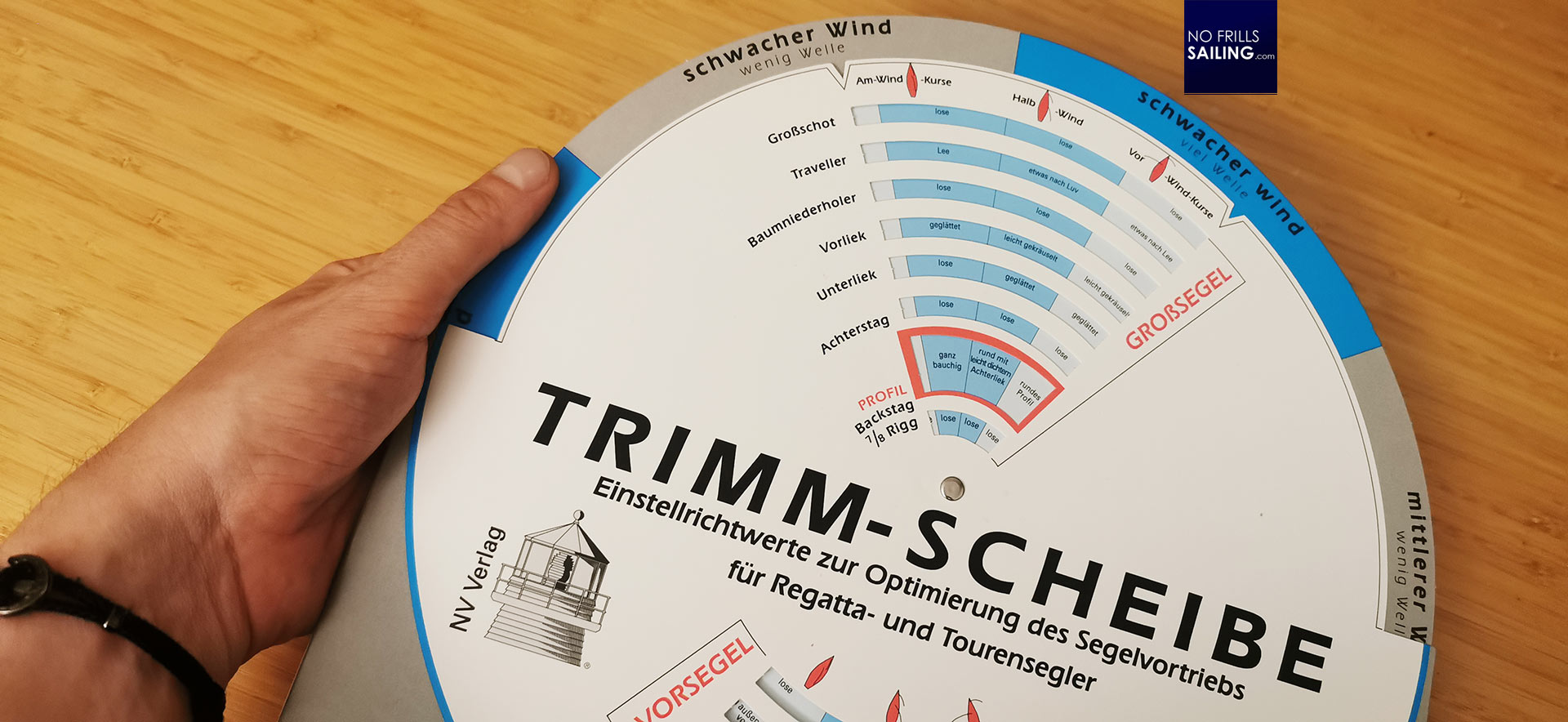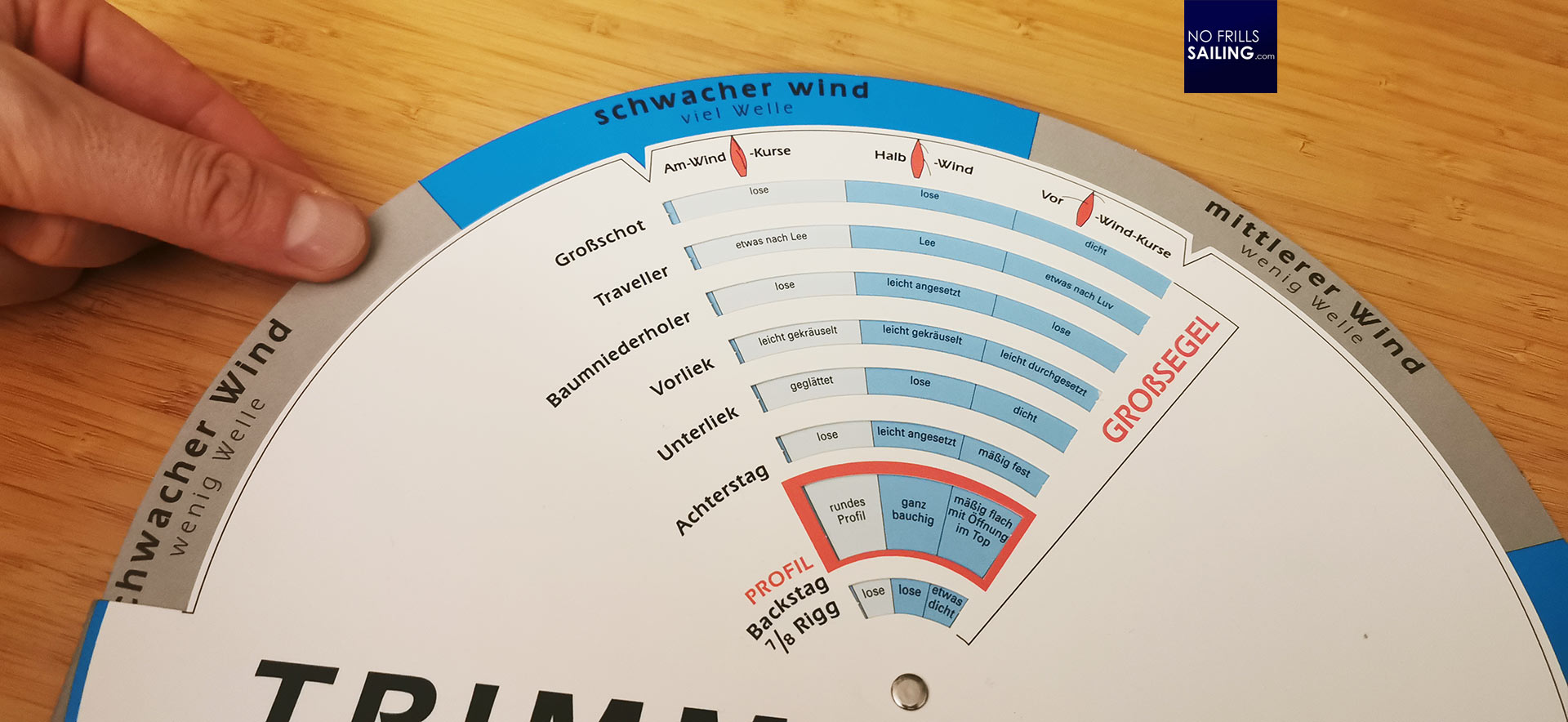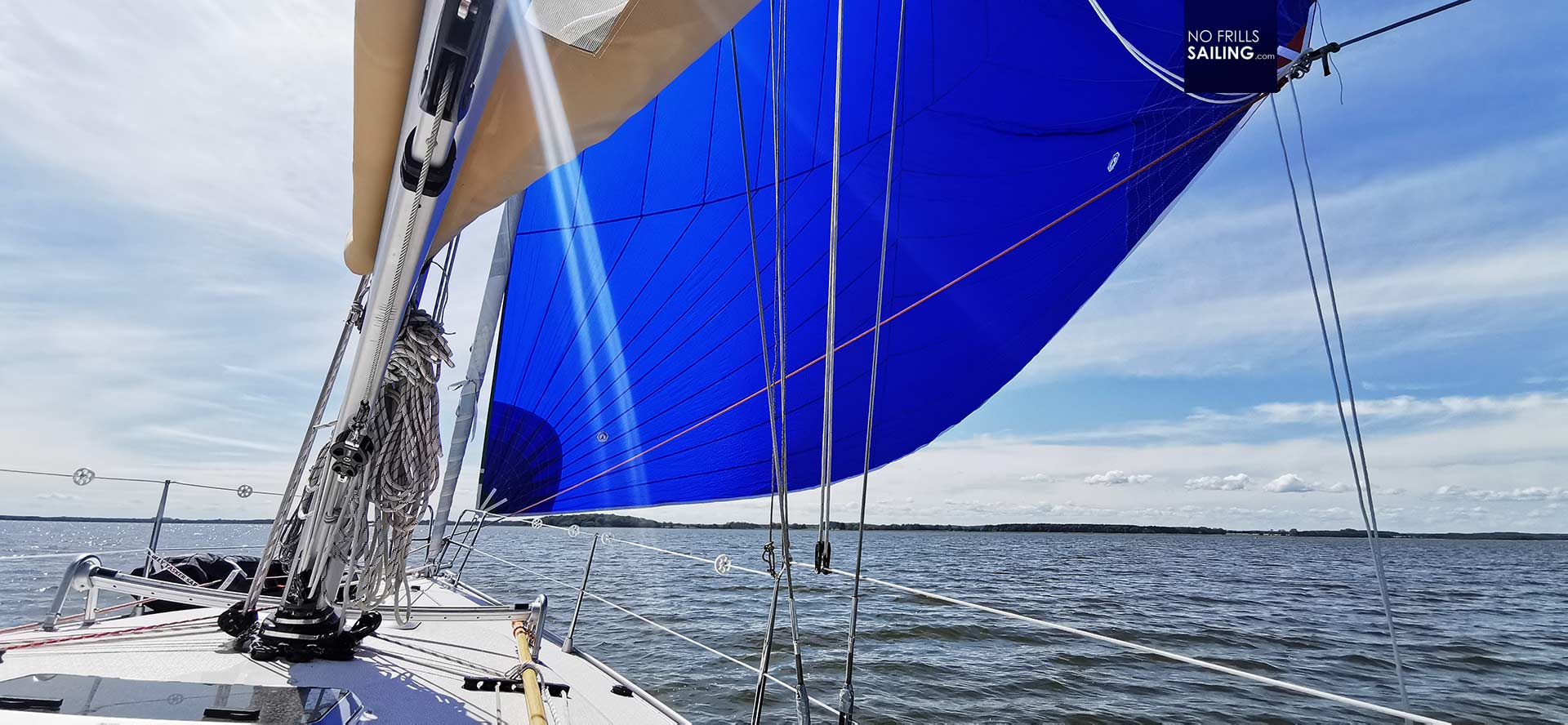Christmas is at the doorstep and the occasionally frantic search for a nice but useful gift is on – as every year. I´ve discovered something quite cool on Amazon and bought it right away because I was keen on checking out if this thing holds up to it´s promise: “Learn the perfect sails trim for your boat”. I am talking about a Sails Trim Disc, first launched in 2002 by German NV Charts publishers. The price is just around 15 Euros but the use for a sailing rookie seems pretty big, so let´s check it out!

Becoming a better sailor is a multifaceted thing. There are many, many aspects to this task and I am sure one never ceases to learn, no matter how many years or how many miles one has sailed. One of the big things in sailing is of course to master the sails. Those are powering your boat and the better a skipper can utilize the sheets and trim lines, the better his boat will sail. The Sails Trim Disc may be a powerful learning tool, both in theoretical and practical education and onboard-training to refine one´s sail trim-capabilities.
A pretty cool learning tool: The Sails Trim Disc
The Sails Trim Disc is made of simple cardboard and much bigger than usual DIN A4-paper-size. The usability aboard is therefore limited. If you take it with you on your boat, make sure the Sails Trim Disc is protected from water and spray, I´m sure it won´t last long if subjected to moisture.

Principally the Sails Trim Disc works like an old school Parking Disc in your car: A round cardboard disc is rotating on a simple center hub, most of the disc´s printed information is hidden by a wrapping that has slids at certain locations, allowing only a few of the disc´s information to be seen through slits. Using the disc and drawing out information on how to trim the sails is a no-brainer.
How the Sails Trim Disc works
First of all, let´s take a look on the different sails trimming information this disc provides. Basically, it delivers pretty specific instructions how to trim your standard sails aboard, the mainsail and the jib. As for the mainsail, the Trim Disc advised you how to adjust the mainsheet, the mainsheet traveller, the boom vang, the outhaul and finally the backstay.

I´d say that is a pretty full set of sail trim controls at hand to adjust your mainsail. Five different details to care about. What happens is that each of those on its own and all together in concert will optimize the sail´s profile to effectively alter the lift created by it. Adjusting the controls to counter balance the different external factors – we will look at those later – will allow you to raise the efficiency of the sail, thus reducing heeling, stress in the rigging and increase the speed of your boat.

For the Jib, the Sails Trim Disc checks adjustments on the sheets, the Jib sheet track, the luff and the general profile of the foresail as well. If you start sailing as a bloody rookie, this may seem a bit overwhelming: No less than 10 different aspects of sails trim controls at hand, that´s a lot to care about! Apart from the fact that on many (let´s say, most) of the modern cruising yachts not all of these controls are present anymore, for example, the mainsheet traveller is a thing of the past in most production cruisers, the Sails Trim Disc allows you to systematically apply the adjustments and learn firsthand by doing it.
Sails trim in theory and application in practice
Mostly, and that was the case with my own boat, when you start sailing as a rookie you will try to get out first in easy conditions. Meaning, a lush breeze, low to no waves, summertime, easy going. You will try out the boat, check for the sails´ performance in each point of sail and get familiar with the sails trim controls, their position in the cockpit and utilizations. Memorizing the colors and locations of each control lines is a thing of its own.

You will then gain more and more confidence as your ability to steer the boat, exert control over her movement through the water will improve each time you go out and practice. Usually, the first bigger trips, day long sailing trips to the neighboring marina or an anchorage will be the next step. A day of sailing may well make you and your boat become subject to weather changes, thus, the need to react, adjust the sails, maybe take in a reef or two when weather deteriorates or wind force increases. Of course, learning to sail is much more than just sails trim: It´s also maneuvers in the marina, general use of the boat in all its details – a huge task, but so much fun! Back to the Sails Trim Disc …
Wave pattern, wind force and points of sail
Trimming a sail is basically nothing more than pulling or easing a specific rope (or more) in reaction to a handful of external factors. The Sails Trim Disc provides a set of those factors which the user can adjust the disc to: Right on the edge of the disc one can turn it to fix a position at a specific wind/wave-pattern present outside.

That´s low wind – low waves, low wind – high waves through to medium and high wind forces, each with low and high waves. As I always tell my fellow sailing clients, for example when they start their sailing career, much more than the strength of the wind, it´s the waves (and the movement of the boat in relation to the waves) that is defining the size of the hustle. The Sails Trim Disc therefore offers six basic “external weather situations” regarding wind and waves to check for the sails trimming controls.

When moving the disc to fit your current sea state and wind outside, you than check for each individual point of sail and go through each of the “slids” – representing one of the said 11 sails trim controls – and read the instructions. For example, sailing upwind in medium winds with much/high waves, the disc emphasizes to take the following actions in your mainsail: Mainsheet moderately tight, mainsheet traveller set to midship, vang loose, outhaul slightly tightened and backstay moderately tightened. Easy as ABC: Just by choosing one of the six “sea & wind states”, the disc delivers eleven (!) trimming adjustments for your sails.
There´s a catch though …
Of course there´s a catch and you will surely have realized it by now reading this article and looking at the pictures provided: You can´t read a word on the disc unless you speak German. I´ve done my research and checked the web if there is an English version of the Sails Trim Disc but I couldn´t find one. It would be awesome of the publishing company, NV Charts, if they´d come out with an English version and I am sure there´s a market for such a product, maybe you´ll write an email to them and ask for it?

So far, one can translate the German on the disc and have a jury-rigged English version (I´m not sure but I saw one posting in the internet with some guy doing exactly that), but that´s a lot of work and I guess the outcome visually wouldn´t be great. Anyways, such a great idea, simple tool with a big impact, a great learning device and certainly (for now only for German-speaking people) a great gift for a skipper for Christmas.

I will keep my Sails Trim Disc for sure and test it coming summer aboard my new boat or maybe any other boat delivered to my clients, a follow-up article on this tool in a live test is therefore set. Learning to sail is a fluid process. You may read as many books as you like, you may watch as many video tutorials as you can. But in the end, casting off, going out and put your sails up into the wind, eating away the miles and making your own experience is the way: Nature will teach you, surely. Nature is the master. But a little cardboard tool like the Sails Trim Disc may be the perfect link from theory to practice to make you become a better sailor.
You might also like to read these articles:
Tack, gybe, tack, gybe … learning to sail
Tackling your skipper certification course
First time out sailing alone
